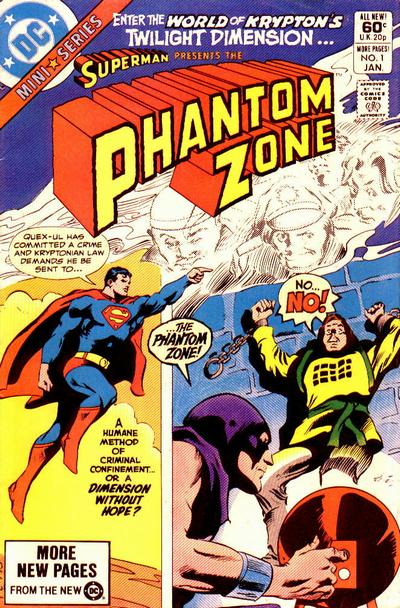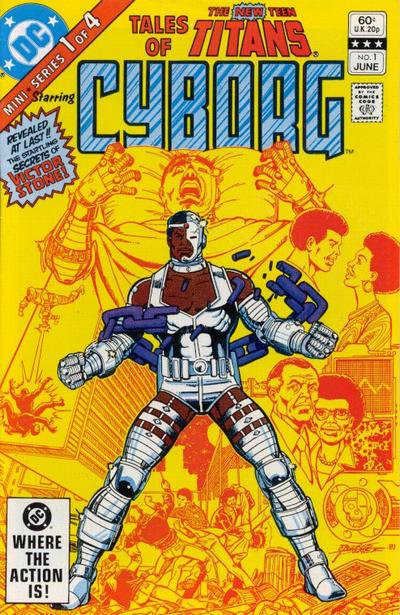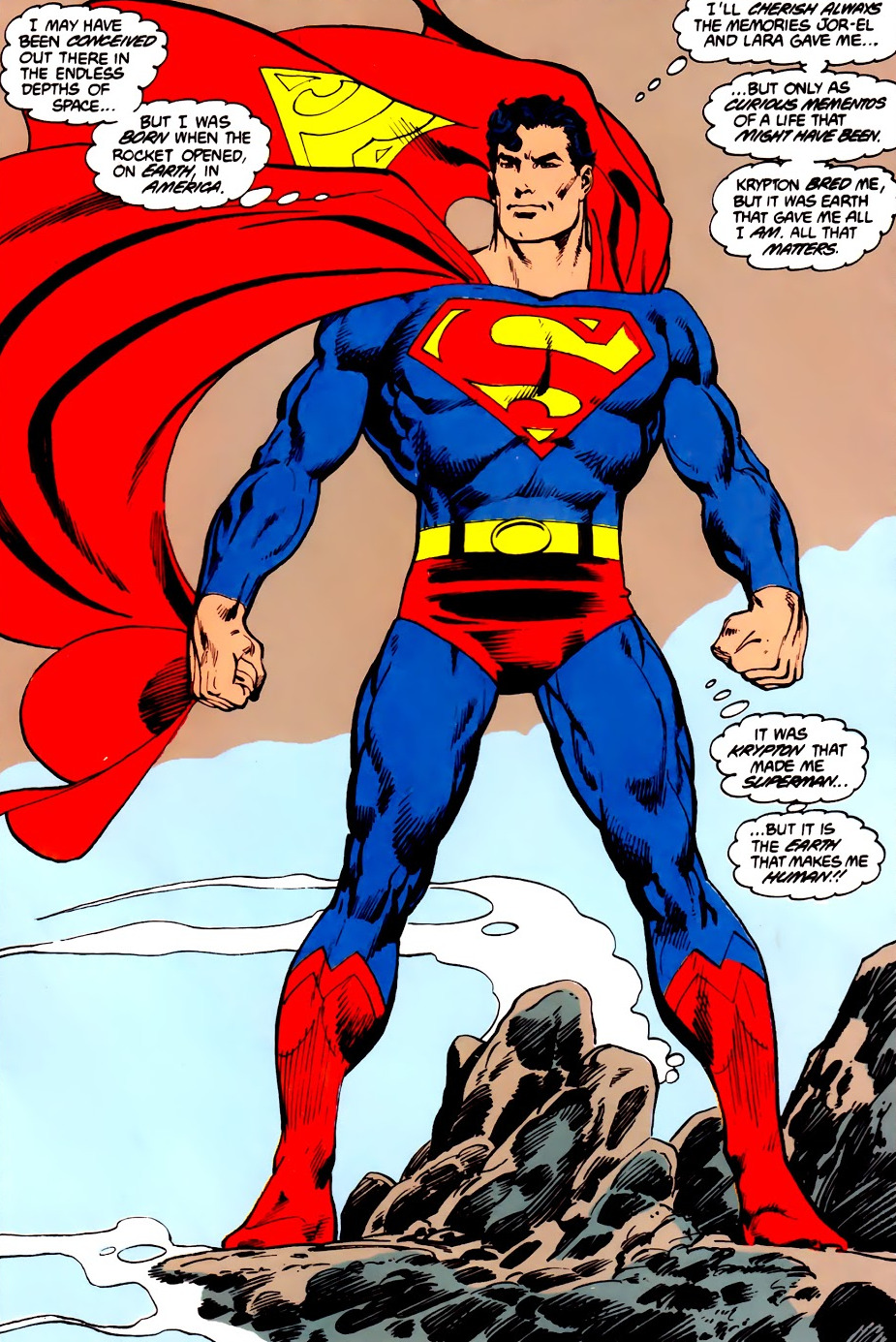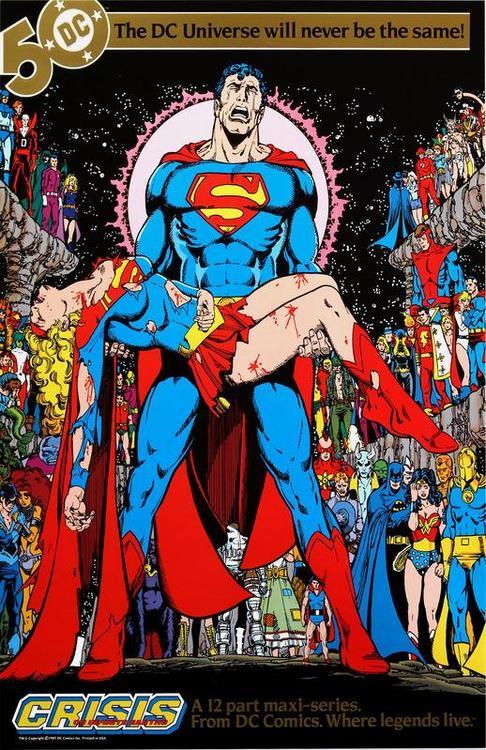
This post was originally published in 2014 on my old site and is reprinted here for kicks without change.
10. Camelot 3000 (1982) (12 issues)
Mike Barr and Brian Bolland’s direct-market-only glossy love letter to Arthurian legend was the first ever DC max-series. It took place in the year 3000, when Arthur and his Knights are revived to combat Morgana LeFay in an epic that combined magic and Science Fiction. It’s a little dated on the reread, but it’s still a great story—and one of the first American works by Brian Bolland, who also came over to Eagle Comics for the first American launch of a Judge Dredd title.

9. The Phantom Zone (1981) (4 issues)
Steve Gerber writes a typically offbeat narrative, but this time it’s about America’s favorite hero. Gene Colan’s shadowy, moody art undercutting the typical bright blues and Christmasy reds of Superman. Villains who make people burst into flames. A Superman story that’s really a horror comic. Nuclear war. Questions of God, country, death, the soul…
Not your average light 1980s fodder by any stretch. In fact, this seems more like a wild, psychedelic 1970s book than a 1980s mini.
8. Green Arrow: The Longbow Hunters (1987) (3 issues)
Full disclosure: I was a huge Mike Grell fan in the 1980s. I was one of those guys who read Warlord. Even got a letter printed in it. And I bought it almost exclusively for the art.
Green Arrow: The Longbow Hunters was just three issues, 100% Grell, and still stands as a thing of beauty. It’s kind of a Green Arrow version of The Dark Knight: Oliver Queen is getting old, so on turning 43 he decides to get serious: He ditches the boxing glove arrows and instead using a single longbow to hunt a modern day Jack the Ripper through the streets of Seattle. It’s a gritty story, and one which involves GA killing a villain who had captured and tortured Black Canary (rape is never shown, but it seems implied). Yes, it’s part of the “darker is better” movement of the late 1980s that led to the overly serious (and generally crappy) comics of the 1990s, but this is truly one of the great ones—it even got an Eisner nod and led to DC’s hiring Grell to write an ongoing Green Arrow book for over a decade.

7. Ronin (1983) (6 issues)
What might be the most interesting part my top 10 DC mini list is that 30% of them didn’t take place in the DCU, but were published under the DC banner. Marvel did a little bit of this, but they were really behind the times—before Icon or Vertigo existed, DC led the charge in publishing what otherwise might been an independent, creator owned work that might have slipped past everyone and been lost to the ages.
I’ve written about Frank Miller and Lynn Varley’s Ronin series before, and I don’t have anything new to say on it.

6. Tales of the New Teen Titans (1982) (4 issues)
The New Teen Titans was the result of an editorial mandate to get a teen book to compete with Marvel’s X-Men, and it ended up being just as good—if not better. Tales was the first “spin off.” Four done-in-ones tied together loosely by the narrative construct of a team camping trip, with the four least-known members telling their own version of their own origin stories: Cyborg, Starfire, Raven, and Changeling (now known as Beast Boy).
This was a miniseries with heart, and it existed outside of the main storyline in The New Teen Titans (so it could be read on its own as a mini). Positioning it as a standalone series meant it could focus on character—and character-driven books were not a “thing” in the 1980s. Nowadays, sure. But back then, it was a pretty fresh concept.
5. Man of Steel (1986) (6 issues)

Back in 1986, DC leveled its universe and tried to start fresh. Man of Steel was an attempt to reboot its flagship character, the first superhero of all time, and they stuck the landing. Unlike the New 52, which felt forced and rushed, John Byrne clearly loved the original Siegel and Schuster stories and kept the same heart and spirit, merely updating the story for a modern audience. Actually, I shouldn’t say “merely.” The changes he made were clear and purposeful—not random, or designed purely to generate a false sense of excitement. DC did similar things with Flash and Wonder Woman in 1986, but this is the one that has continued to affect how to tell Superman stories even now, thirty years later.
4. Ambush Bug (1985) (4 issues)

For all the staid corporate sameness throughout the new 52, DC in the 1980s was actually a pretty adventurous place. I mean compare this top 10 to Marvel’s best minis of the same era: While Marvel did revamp some existing D-listers and created Longshot, DC was doing some really special, non-continuity stuff: Watchmen, Ronin, Camelot 3000…They even did a bound two-issue special “The History of the DC Universe in 1986 that really, really good. DC in the 1980s challenged the status quo.
And then there was Ambush Bug, who creator Keith Giffen premiered in DC Comics Presents #52, one of the greatest team-up books ever, in 1982 but who quickly got his own, wacky noir in 1985, created by Giffen with a script by Robert Loren Fleming. To give you a small indication of what it was about: His partner is a toy doll that he found in the garbage and named “Cheeky.”
The book was a send up of the comic book industry itself, much as the Marvel Bullpen was featured in many of its own books at the time, but had a completely unique voice. Satire and humor were definitely more acceptable in the 1980s than now (I can’t think of any comic book, Deadpool included, whose sole reason to exist is to make you laugh). It’s too bad. The time is ripe for another round of Ambush Bug, this time perhaps investigating the death of the Old 52?

3. Batman: The Dark Knight Returns (1985) (4 issues)
Clearly this is one of the most influential books of all time, both in terms of format (four oversized, glossy and expensive issues) and tone (Adult oriented! Violent!). Say what you want about whether it’s canon or whether Frank Miller actually did a service to the industry, but it’s one of the few books I’ve read more than ten times. And every time I find something that seems new to me.

2. Crisis on Infinite Earths (1985) (12 issues)
As mentioned above, this was DC’s first attempt at a “new 52;” everything collapses, continuity is recreated, major characters are killed (Supergirl, Flash), and afterwards, even Superman’s power set is different. It was also DC’s first “crisis,” which was the name they’d later slap on to four other events that had varying degrees of comparable signficance.
But unlike the New 52 and most of DC’s other line-wide events, Crisis was actually good. The publisher’s two best creators, Marv Wolfman and George Perez, handled every issue—the equivalent of a Claremont/Byrne event at Marvel, or, in modern terms … Actually, there aren’t any modern writer-artist teams that are so clearly co-associated. These days, writers seem to drive projects and artists are attached to help sell them. Maybe that’s why events don’t seem as organic anymore. I mean, there are modern duos: Brubaker and Philips, for example. But they also work just as successfully alone. In the 1980s, Wolfman and Perez, when together, were unbeatable.
They were (ahem) the “Titans” of the industry.
1. Watchmen (1986) (12 issues)


Hailed as the greatest comic book story ever told by many, and it’s hard to argue the point. If I had a “top 10 comic stories ever,” Watchmen would definitely be on it. Along with Amazing Fantasy #15, Amazing Spider-Man #229-230 (vs. Juggernaut), and that issue of Fantastic Four where Thing is a pirate.
